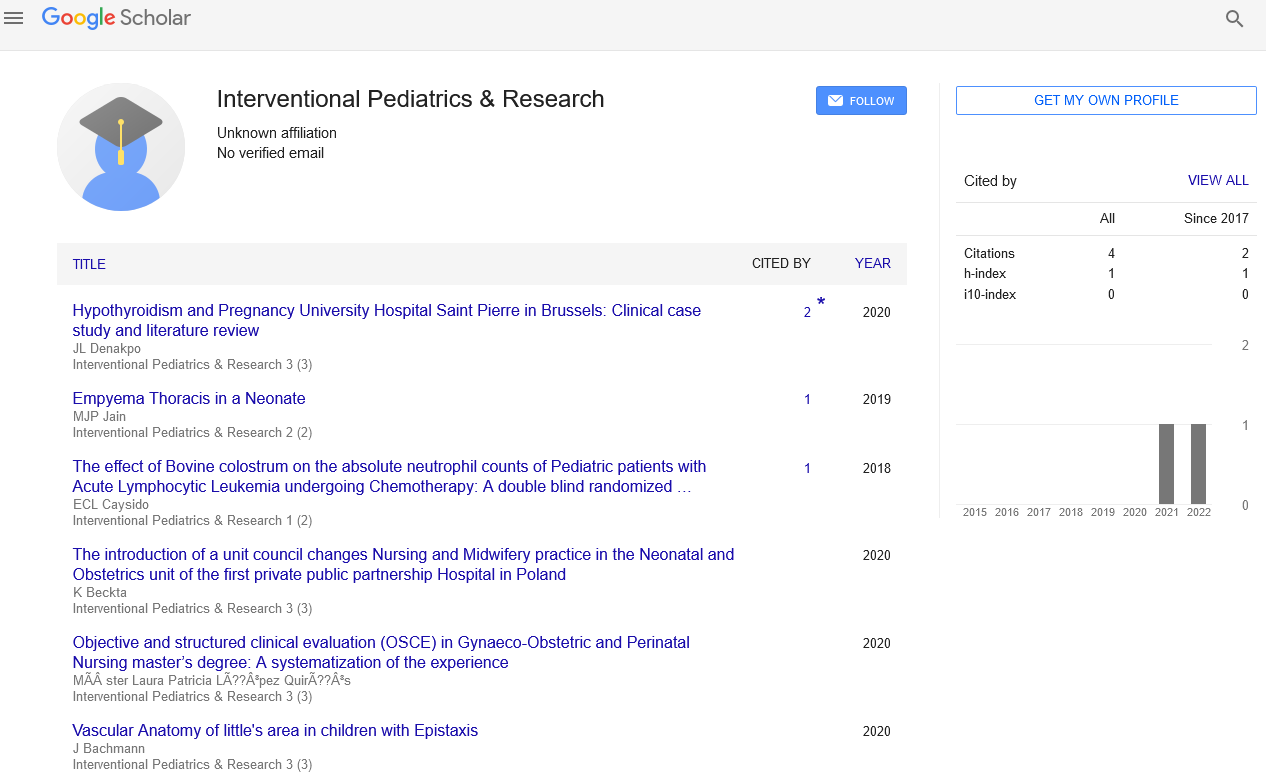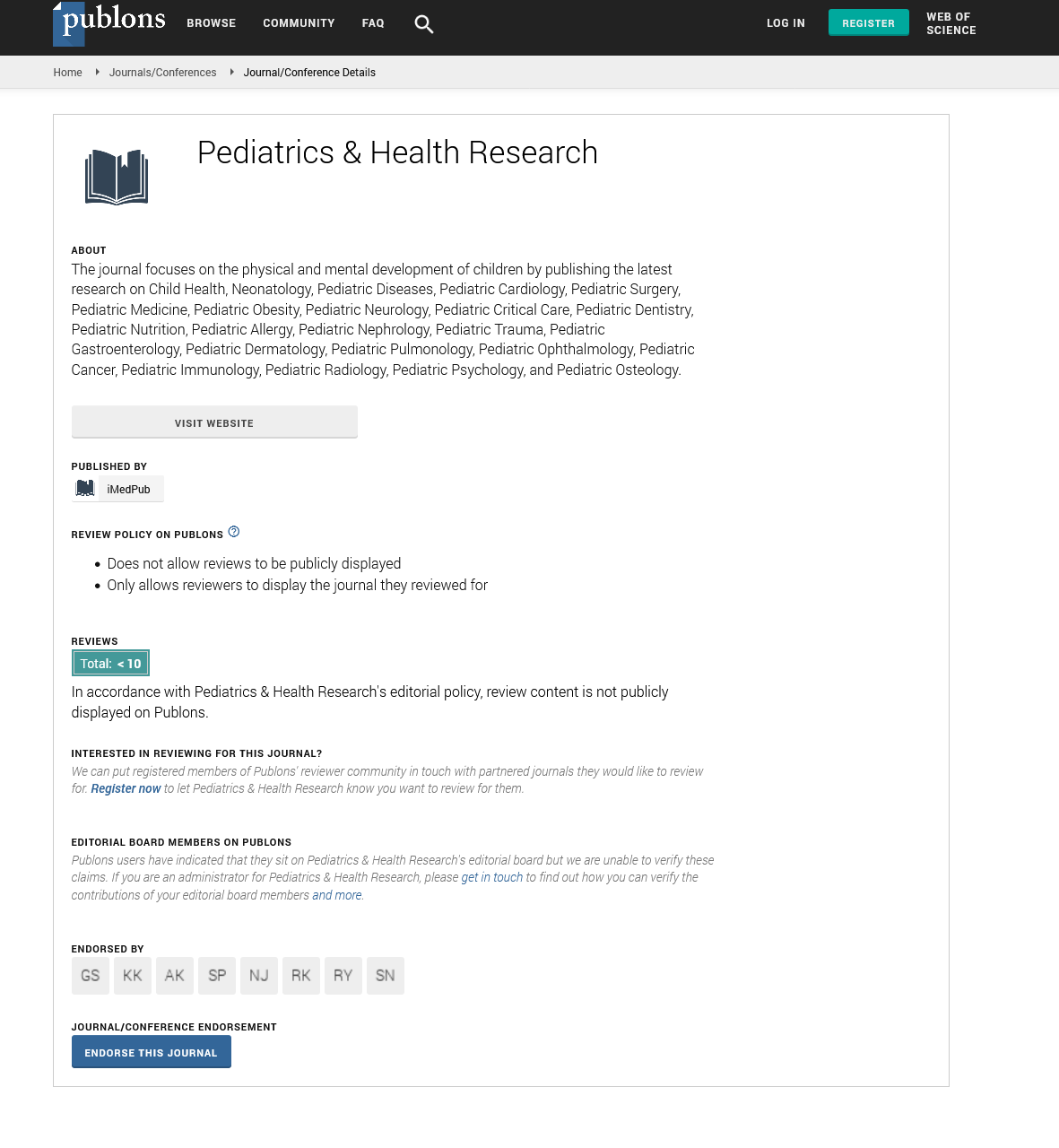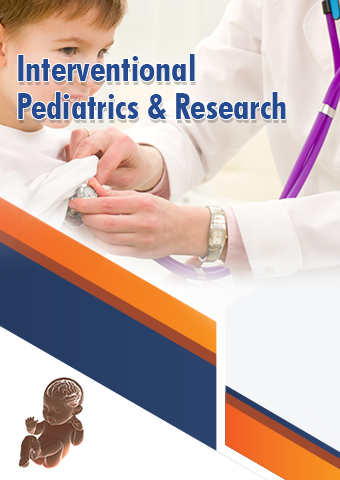Editorial - Interventional Pediatrics & Research (2023) Volume 6, Issue 3
Anticoagulant Drugs: Understanding their Mechanism and Clinical Applications
Mekal Zesh*
Department of Economics, Bethune College, University of Calcutta, India
- *Corresponding Author:
- Mekal Zesh
Department of Economics, Bethune College, University of Calcutta, India
E-mail: Meka876@gmail.com
Abstract
Anticoagulant drugs play a critical role in the prevention and treatment of thrombotic disorders, which are associated with excessive blood clotting. These drugs act by inhibiting various components of the coagulation cascade, thereby reducing the risk of thrombosis and its potential complications. This abstract provides an overview of anticoagulant drugs, including their mechanisms of action, therapeutic applications, and emerging trends in the field. The coagulation cascade consists of a complex series of enzymatic reactions that ultimately lead to the formation of fibrin, a key protein involved in blood clot formation. Anticoagulant drugs can target different steps of this cascade, such as inhibiting the synthesis or function of clotting factors or preventing platelet aggregation. Commonly used anticoagulant drugs include heparins, vitamin K antagonists (e.g., warfarin), direct oral anticoagulants (DOACs), and antiplatelet agents. Heparins, both unfractionated and low molecular weight heparins, act by enhancing the activity of ant thrombin, a natural anticoagulant protein that inactivates clotting factors. They are widely used for the prevention and treatment of venous thromboembolism and during certain medical procedures. Vitamin K antagonists, such as warfarin, interfere with the synthesis of vitamin K-dependent clotting factors and are commonly prescribed for long-term anticoagulation in conditions such as atrial fibrillation and deep vein thrombosis. Direct oral anticoagulants (DOACs), including the direct thrombin inhibitor (e.g., dabigatran) and factor Xa inhibitors (e.g., rivaroxaban, apixaban), directly target specific factors in the coagulation cascade. DOACs offer several advantages over traditional anticoagulants, such as predictable pharmacokinetics, fewer drug interactions, and no requirement for routine monitoring. They are increasingly used for various indications, including stroke prevention in atrial fibrillation and treatment of venous thromboembolism. In addition to the established anticoagulant agents, emerging trends in the field include the development of novel anticoagulant drugs and the exploration of targeted therapies. Novel agents under investigation include factor XI inhibitors, which aim to selectively block a specific step in the coagulation cascade, potentially reducing bleeding risks associated with broad anticoagulation. Targeted therapies involve identifying specific biomarkers or genetic factors to tailor anticoagulant treatment to individual patients, maximizing efficacy and minimizing adverse effects. In anticoagulant drugs are vital therapeutic agents for the prevention and treatment of thrombotic disorders. They exert their effects through various mechanisms, targeting different components of the coagulation cascade. The evolution of anticoagulant therapy is characterized by the development of new agents with improved efficacy and safety profiles, as well as personalized approaches to optimize treatment outcomes. Further research and clinical studies are necessary to continue advancing anticoagulant therapy and improve patient care in the management of thrombotic conditions.
Keywords
Anticoagulant drugs • Thrombotic disorders • Blood clotting • Enzymatic reactions • Vitamin K antagonists • Drug interactions
Introduction
Anticoagulant drugs, also known as blood thinners, are medications that help prevent blood clot formation or inhibit the growth of existing clots. They play a crucial role in the management and prevention of various medical conditions related to blood clotting. This article aims to provide an overview of anticoagulant drugs, their mechanism of action, common types, and their clinical applications [1].
Mechanism of action
Anticoagulant drugs work by interfering with the body’s blood clotting process. They target different steps in the clotting cascade, a series of biochemical reactions that occur when a blood vessel is injured. The primary mechanisms of action for anticoagulants include, Inhibition of clotting factors: Anticoagulants can target specific clotting factors involved in the formation of blood clots. For example, heparin and its derivatives inhibit thrombin, a key enzyme in the clotting cascade. Warfarin interferes with vitamin K, a necessary component for the synthesis of clotting factors II, VII, IX, and X [2,3].
Platelet aggregation inhibition: Some anticoagulants, such as aspirin and clopidogrel, work by preventing platelets from clumping together, thus reduce the risk of clot formation [4].
Types of anticoagulant drugs
Anticoagulant medications can be classified into several categories based on their mechanism of action and route of administration:
Heparins: Heparin and low molecular weight heparins (LMWHs), such as enoxaparin and dalteparin, are commonly used injectable anticoagulants. They act by enhancing the activity of ant thrombin III, a natural anticoagulant protein that inhibits thrombin and other clotting factors [5].
Vitamin K antagonists: Warfarin is the most widely used oral anticoagulant. It interferes with the production of vitamin K-dependent clotting factors in the liver.
Direct Oral Anticoagulants (DOACs): DOACs, including dabigatran, rivaroxaban, apixaban, and edoxaban, are newer oral anticoagulants that directly inhibit specific clotting factors. They offer convenient dosing without the need for frequent monitoring compared to warfarin [6].
Clinical applications
Anticoagulant drugs are utilized in various clinical scenarios, including:
Prevention and treatment of deep vein thrombosis (DVT) and pulmonary embolism (PE): Anticoagulants are commonly prescribed to reduce the risk of blood clots in individuals at risk, such as those undergoing surgery or immobilized patients [7].
Atrial fibrillation: Patients with atrial fibrillation, a type of irregular heartbeat, are prone to blood clots. Anticoagulant therapy, often with DOACs, is used to prevent stroke and systemic embolism in these individuals [8].
Treatment of acute coronary syndromes: Anticoagulants, in combination with antiplatelet agents, are crucial in managing acute coronary syndromes, such as unstable angina and myocardial infarction, to prevent clot formation and subsequent complications [9].
Mechanical heart valves: Patients with mechanical heart valves are at an increased risk of clot formation. Anticoagulant therapy, usually with vitamin K antagonists, is necessary to prevent valve thrombosis [10].
Conclusion
Anticoagulant drugs are essential in the prevention and treatment of various conditions associated with abnormal blood clotting. Understanding their mechanisms of action and appropriate clinical applications is crucial for healthcare professionals to optimize patient care and minimize potential complications. The development of newer anticoagulant agents.
References
- Persani L. Central hypothyroidism: pathogenic, diagnostic, and therapeutic challenges. J Clin Endocr. 97, 3068-3078(2012).
- Bello AL, Acquah A, Quartey JN et al. Knowledge of pregnant women about birth defects. BMC Pregnancy and Childbirth 13, 1471-2393(2013).
- Jomaa M. A challenging diagnosis and management of Herlyn-Werner-Wunderlich syndrome in low-resource settings: a case report complicated with hydronephrosis. Ann Med Surg. 70,102-843(2021).
- Howard L, Mancuso AC, & Ryan GL Müllerian aplasia with severe hematometra: A case report of diagnosis and management in a low resource setting.J Podiatry Adolesc Gyneco. l32, 189-192(2019).
- Timothy E. Obstetric ultrasound use in low and middle income countries: a narrative review. Reprod health .15, 1-26(2018).
- Melamed N. FIGO (international Federation of Gynecology and obstetrics) initiative on fetal growth: best pracice advice for screening, diagnosis, and management of fetal growth restriction. Int J Gynaecol Obstet. 1,152 -352(2021).
- Jomaa M. A challenging diagnosis and management of Herlyn-Werner-Wunderlich syndrome in low-resource settings: a case report complicated with hydronephrosis. Ann Med Surg. 70,102-843(2021).
- Dolk H, Leke AZ, Whitfield P et al. Global birth defects app: An innovative tool for describing and coding congenital anomalies at birth in low resource settings. Birth Defects Res. 113, 1057-1073(2021).
- Mbonda A. Diagnosis of Fraser syndrome missed out until the age of six months old in a low-resource setting: a case report. BMC paediatrics. 19, (2019).
- Ballantyne A, Newson A, Luna F et al. Prenatal diagnosis and abortion for congenital abnormalities: is it ethical to provide one without the other?. AJOB.9, 48-56 (2009).
Indexed at, Google Scholar, Crossref
Indexed at, Google Scholar, Crossref
Indexed at, Google Scholar, Crossref
Indexed at, Google Scholar, Crossref
Indexed at, Google Scholar, Crossref
Indexed at, Google Scholar, Crossref
Indexed at, Google Scholar, Crossref
Indexed at, Google Scholar, Crossref
Indexed at, Google Scholar, Crossref


